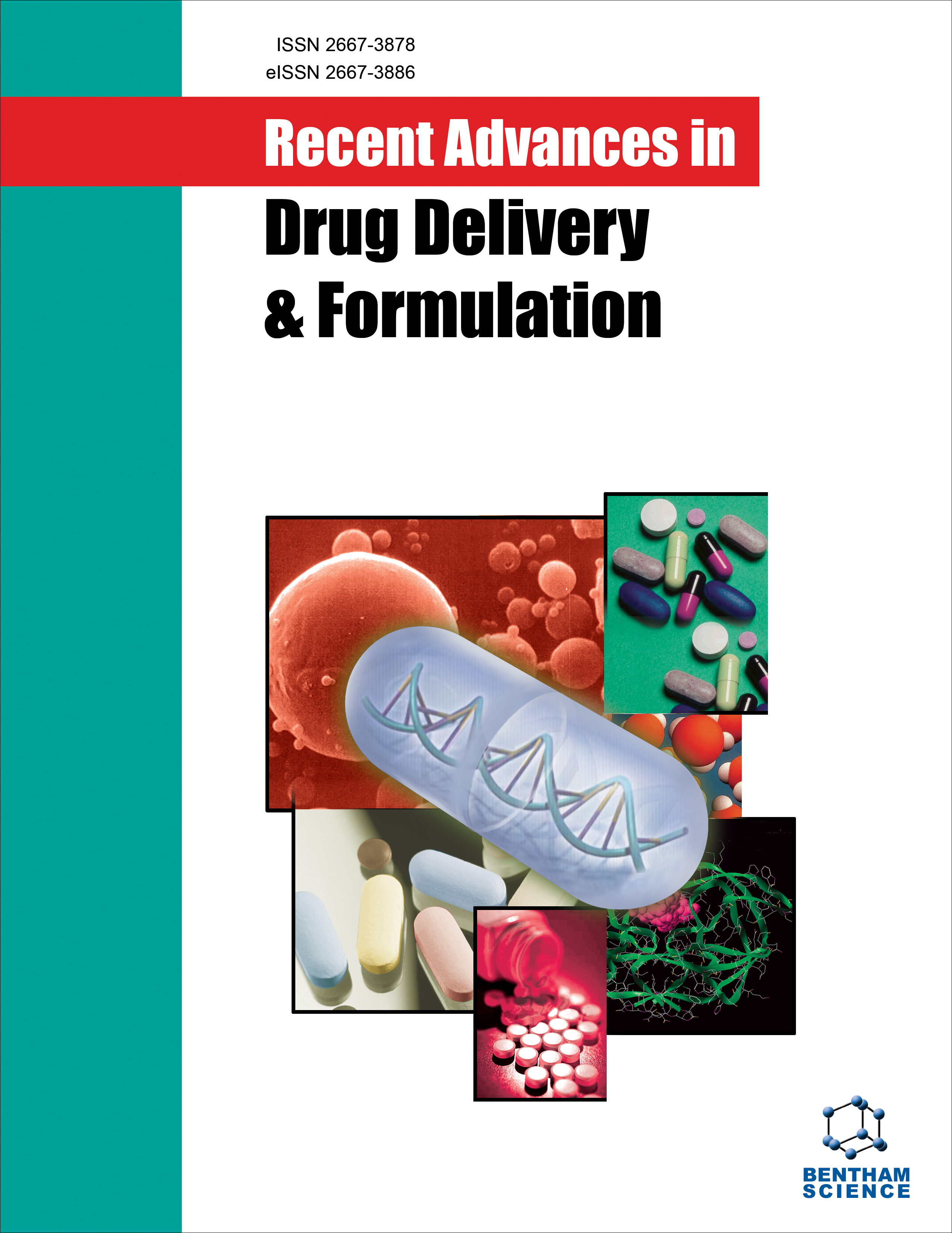- Home
- A-Z Publications
- Recent Advances in Drug Delivery and Formulation
- Previous Issues
- Volume 18, Issue 2, 2024
Recent Advances in Drug Delivery and Formulation - Volume 18, Issue 2, 2024
Volume 18, Issue 2, 2024
-
-
Navigating the Solution to Drug Formulation Problems at Research and Development Stages by Amorphous Solid Dispersion Technology
More LessAuthors: Devika Tripathi, Manjunatha P. B.H, Jagannath Sahoo and Jyoti KumariAmorphous Solid Dispersions (ASDs) have indeed revolutionized the pharmaceutical industry, particularly in drug solubility enhancement. The amorphous state of a drug, which is a highenergy metastable state, can lead to an increase in the apparent solubility of the drug. This is due to the absence of a long-range molecular order, which results in higher molecular mobility and free volume, and consequently, higher solubilit Read More
-
-
-
Formulation Consideration of Medicated Chewing Gum: A Review
More LessAuthors: Kishan Bobe, Yoesh Suryawanshi, Virendra Gomase, Muizz Kachhi and Chandrashekhar BobadeIn recent times, technological and scientific advances have been made in studying and developing orally delivered medication. Such studies demonstrate the importance of the oral route among patients. The accuracy of drug delivery is very important to achieve a successful therapeutic effect in the case of various pharmaceutical products. A novel drug delivery system adds new benefits or advantages to a drug. This revi Read More
-
-
-
Choc-Tadalafil Fusion: Unlocking Solubility and Taste Harmony with β-CD-Infused Medicated Chocolate
More LessAuthors: Chetna Modi, Manobika Sinha, Vaishali Thakkar, Hardik Rana and Dipika ChavdaObjective: The primary limitations of tadalafil in treating erectile dysfunction are its low solubility and unpleasant bitter taste, which ultimately result in inadequate patient adherence. The present study aimed to develop and characterize a medicated chocolate formulation containing Tadalafil and β-CD (solubility enhancer) employing the concept of Design of Experiment (DoE) using chocolate as a user-friendly excipient. Methods: A Read More
-
-
-
Crisaborole-Enthused Glycerosomal Gel for an Augmented Skin Permeation
More LessAuthors: Ragini Singh, Anshu singh, Dipti Srivastava, Zeeshan Fatima and Rammani PrasadBackground: Crisaborole (CB), a boron-based compound, is the first topical PDE4 inhibitor to be approved by the US Food and Drug Administration (2016) for the treatment of Atopic Dermatitis. It is marketed as a 2% ointment (Eucrisa, Pfizer). However, CB is insoluble in water; therfore, CB glycersomes were formulated to enhance its permeation flux across the skin. Objective: We developed a glycerosomal gel of CB and co Read More
-
-
-
In Vitro Development of Enteric-Coated Tablets of the Probiotic Lactobacillus fermentum LF-G89: A Possible Approach to Intestinal Colonization
More LessBackground: Probiotics must be able to withstand the demanding environment of the gastrointestinal system to adhere to the intestinal epithelium, promoting health benefits. The use of probiotics can prevent or attenuate the effects of dysbiosis that have a deleterious effect on health, promoting anti-inflammatory, immunomodulatory, and antioxidant effects. Objective: The aim of the study was to prepare tablets contai Read More
-
-
-
Dermal Delivery of Hypericum perforatum (L.) Loaded Nanogel: Formulation to Preclinical Psoriasis Assessment
More LessAuthors: Neelam Singh, Shubh D. Yadav, Puneet Gupta, Faraat Ali and Sandeep AroraBackground: Nanophytosomes represent an effective choice for topical drug delivery systems thanks to their small size, general non-toxicity, ease of functionalization and high surface to volume ratio. The goal of the current study was to investigate the potential benefits of using Hypericum perforatum extract nanogel as a means of improving skin penetration and prolonging skin deposition in dermatitis similar to psoriasis. M Read More
-
Volumes & issues
Most Read This Month
Article
content/journals/raddf
Journal
10
5
false
en


